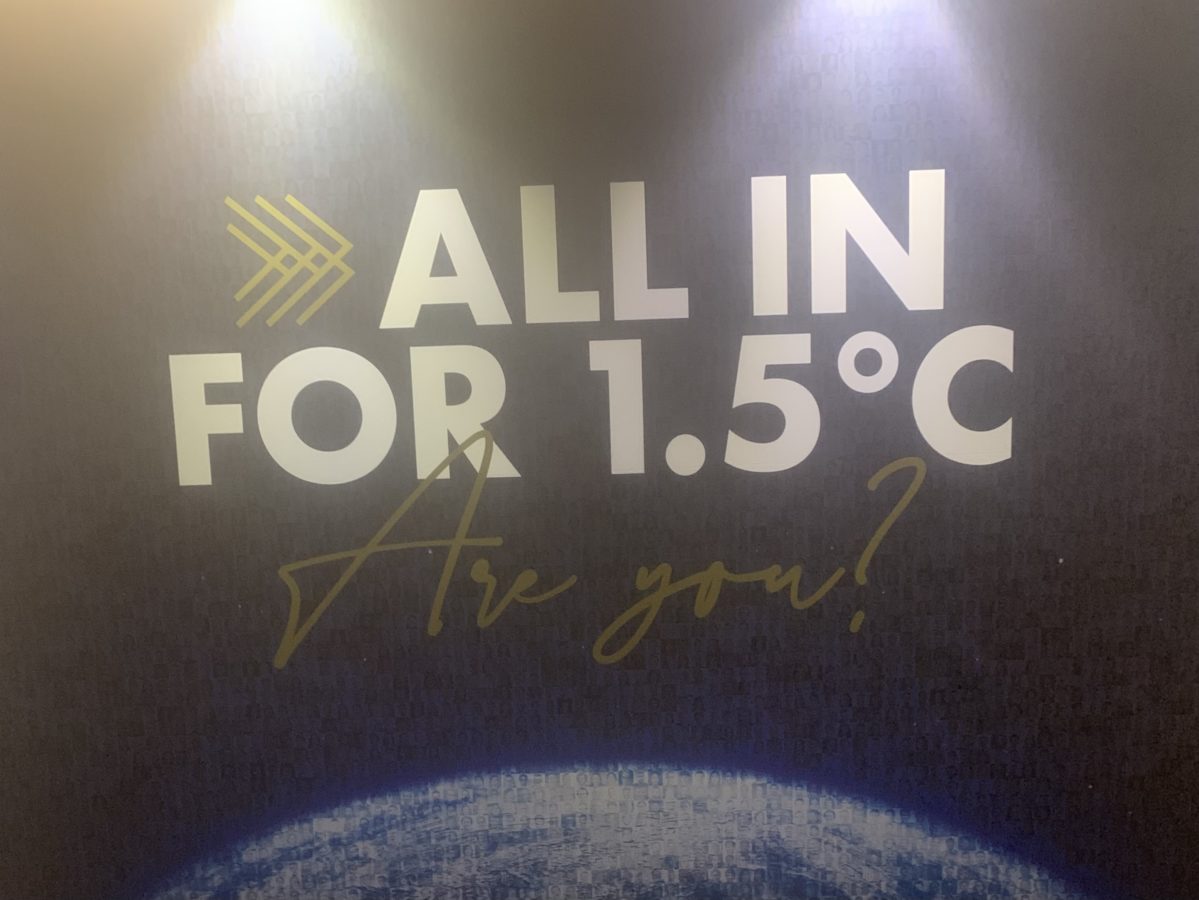I had the opportunity to attend my first COP—COP26, thanks to the Chisholm Legacy Project (CLP), where I sit on the Advisory Board, and CLP Founder Jacqui Patterson. I returned to the US from Glasgow, Scotland on the last official day of the COP—Friday, November 12, 2021. Since that time, I have had an opportunity to really reflect on it. I do not want to focus on the heads of countries or the delegates, but on the other people who attended COP26, the ones who were really ready to commit to immediate action, the ones who were literally fighting for people and the planet.
Before I left for COP26, I wrote a blog post describing my expectations of the conference. Unfortunately, my experience was bittersweet. In addition to the ‘fails’ from the conference, I did experience or observe positive actions that gave me much hope!
Here are 4 positive actions I experienced and which really resonated with me. I will follow up with 5 things that I consider to be abject failures, including issues that should have been handled in a totally different way, but instead fell woefully short, in my opinion.
Positives
- The “World’s To Do List” – this list of 17 Sustainable Development Goals (SDGs) was plastered on walls and distributed all over Glasgow
The action items in this awesome list, shown in the box, are what this world needs to accomplish in order to create a better life for everyone. It is straightforward, clear and concise. Most of all, it is doable!

2. The Health Pavilion and the HealthAlliance – In my first blog, I wrote about the need to focus on health. In my second blog, I discussed the undeniable interconnectedness between climate change and health. For the first time, there was a Health Pavilion at a COP and I love it. The health community has been meeting at venues outside of the COP for years, but hopefully the presence of the Pavilion, as well as the great panel presentations on health at the U.S. Center, heralds the World’s intense focus on Climate and Health. In addition to the Health Pavilion, I discussed the COP26 Health Programme, supported by the UK government as the Presidency of COP26, the World Health Organization (WHO), Health Care Without Harm, and the UNFCCC Climate Champions, World Health Organization and established “to bring stronger health focus and ambition to COP26”. I and others were excited that the US Department of Health and Human Services (DHSS), announced that the US joined the Health Programme—a huge step towards ensuring healthy, resilient communities and bringing President Biden’s National Climate Strategy into reality. As a part of that announcement, the Office of Climate Change and Health Equity, within the Office of the Assistant Secretary for Health (OASH) was introduced (or reintroduced). The Interim Director of the new Office is John M. Balbus, MD, MPH, who will lead the charge to protect public health.
3. The energy and dedication of civil society – I cannot begin to describe the energy, focus and passion I witnessed during both weeks of COP26. Look to civil society for the ways to tackle the climate emergency, because they (we) are seriously working on it. I was invigorated by participating in activities outside of the COP (Week 1) and those in the Pavilion (Week 2). Civil society is doing the real work and getting into ‘good trouble.’
4. Availability of FREE COVID-19 rapid self tests to all – One important action that really stood out was the availability of COVID-19 Rapid tests—7 per box—that were freely handed out to anyone. This was done ALL OVER THE CITY and I suspect in other places too. These tests were not a part of the rapid testing requirements of the COP26 for registered participants and I am totally on board with this practice. It should be available everywhere—for free.

Negatives — some of which need no elaboration
- Absence of representatives from countries unable to obtain the vaccine in a timely manner, and the additional absence of those protesting that fact.
- Sharing unused and extra COP26 observer credentials – There were over 11,000 observers registered for COP26. Some of those people did not even attend a single event or attended only 1 event. Some never even picked up their credentials. Most of those people were from large organizations where the money spent on the unused credentials was merely a drop in the bucket. As a result, a large number of people from poor countries, from environmental justice communities, students and others – could not even get into the COP. Instead of ensuring that those credentials were used by people without access to COP, they instead chose to waste them. That is so ridiculous! Why not provide an opportunity to those who otherwise would not have the ability to participate. Then there are organizations like US Climate Action Network (USCAN), which so graciously provided me with credentials for week two and to whom I am eternally grateful, and the Union of Concerned Scientists, which gave their extra credentials to students from the global south.
- Lack of inclusivity and accessibility – In addition to the problems I describe above, a number of people—particularly young people—left COP26 early. By that I mean they changed their flights and left Scotland earlier than initially intended. Some said that they felt that the COP26 itself was not inclusive. For example, observers were actually barred from a number of sessions that should have been open. Also, when 1 or 2 observers were allowed into a meeting, they saw many empty chairs—not because of COVID-19. It appeared to be a deliberate effort to exclude people. Finally, some young people of color who were observers used Twitter to express their feelings about their experiences with the COP. They stated that they were victims of racism by people of color from other countries and were excluded from some activities.
- Loss and damages and climate finance – This should have been one of THE MOST IMPORTANT ISSUES for COP26 and here in the US at the federal, state and local level. I touched on only a small portion of this issue in my last blog. There is so very much to say about how COP26 addressed Loss and Damage and Climate Finance. But I will sum it up in a few words. They did not address it in any meaningful way. This was a continuous disappointment during the COP. People are constantly dealing with infrastructure damage from extreme weather and some are forced to live in homes repeatedly damaged from climate change because they cannot afford repairs. In most cases, insurance is non-existent because of requirements for coverage. It is imperative that guidelines for loss and damages be developed – with input and guidance from those most affected. I would like to share some information on loss and damage from an international context here and information on the history of loss and damage, along with Article 8 of the Paris Agreement here.
- Climate and Environmental Justice – In my pre-COP26 blog, I talked about the need for the Conference of the Parties to agree to focus on and address environmental and climate justice issues, as these two overarching issues play an important role when addressing any of the UNFCCC issue areas. Although there were a few environmental justice or climate justice panels, these were few and far between. It is not truly possible to talk about climate change without talking about and examining the relationship between that and environmental justice and systemic racism. The hope is that next year there will be an Environmental Justice Pavilion at COP27 in Egypt.

Of course, my list of important issues and how they were or were not addressed at COP26 may not be the same as others. But in my opinion, these are the issues that stood out to me.
I would like to end with a heartfelt thank you to Natalie and USCAN, as well as all of the other CAN members, like CAN International and others. The passion and focus the members expressed was awesome to behold.
We have our marching orders. We know what needs to be done. We just need people who are blocking progress to get the hell out of the way so we can get on with saving lives and creating an inclusive, equitable planet.

